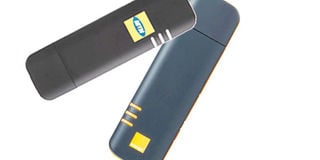Prime
What are 3G modems all about?

MTN and Orange are in battle. We are yet to see a clear winner as the battle gets fierce every day. These two are riding on the popular 3G technologies. The name “3G” implies that there were two preceding generations, as indeed there were.
First generation service come to life in 1980s-era phone networks called advanced mobile phone service (AMPS) networks. 1G service was analog but more than sufficiently advanced and expensive for most users at the time, but as the popularity and technological capabilities of mobile phone service increased, innovations were needed to upgrade service networks accordingly. Second generation came into play in the 1990s and it is the generation which Celtel entered the market with. The fairly recent but minor 2.5G iteration is the generation used by all the networks currently.
Enter Orange and MTN, who have popularised 3G. The jump from 2G or 2.5G to 3G is quite big because the latter includes so much more than just phone calls. 3G basically makes your Internet access go wild and the beauty of it all is the wireless-ness. The Internet speeds are very insane. I remember a time when having Internet meant first having a landline and paying for every second you were connected whether or not there was data flow. Did you know that Utl was the first to introduce 3G in Uganda? For some unknown reason, they simply did not push is as much as they should have.
So what is a 3G Modem? Well, it is a device that allows a computer to connect to the Internet via a high-speed mobile connection. The technology is largely the same that is used for delivering Internet content to modern mobile phones. In most cases, a 3G modem will come as a plug-in device, often referred to as a dongle.
All the dongles from MTN and Orange are from the same Company - Huawei, which is a bit odd. The dongle usually plugs into a USB slot on a computer and closely resembles a portable memory drive. The device houses the antennae that receive the signal, the SIM card that authenticates the user to communicate on the network and the modem itself, which converts the wireless information into data the computer can understand. Some laptops come with inbuilt 3G modems and all you need is a SIM card.
Furthermore many newer advanced phones can actually work as 3G modems. With a cable you can always turn your phone into a 3G Modem through a process called Tethering. It is slightly more expensive that buying data for the dongle but the trade-off is that you are using the same bought Data for both your laptop and phone.
Some forms of 3G modems also work as a router, meaning they can share the signal with multiple devices or computers. Some such routers are relatively large devices and sometimes include slots for making a wired connection with computers. Others are smaller and communicate with the computers via Wi-Fi. This can be a useful solution for small offices that require subtle Internet connection speed for regular Internet use and do not have that dude with the incognito title of “Downloads Manager” on staff.
MTN and Orange have run promotions in this regard, where it is a whole bundle with laptop computers included. A 3G modem user will often have to be much more careful about their Internet use than somebody using cable-based service. This is because there are usually much lower monthly limits on the data that can be downloaded. These can be as low as 70MB and rarely exceed 10GB a month.
All I can say is that for an average user, all these modems are the same and the difference is really whose camp you are in, MTN or Orange.




